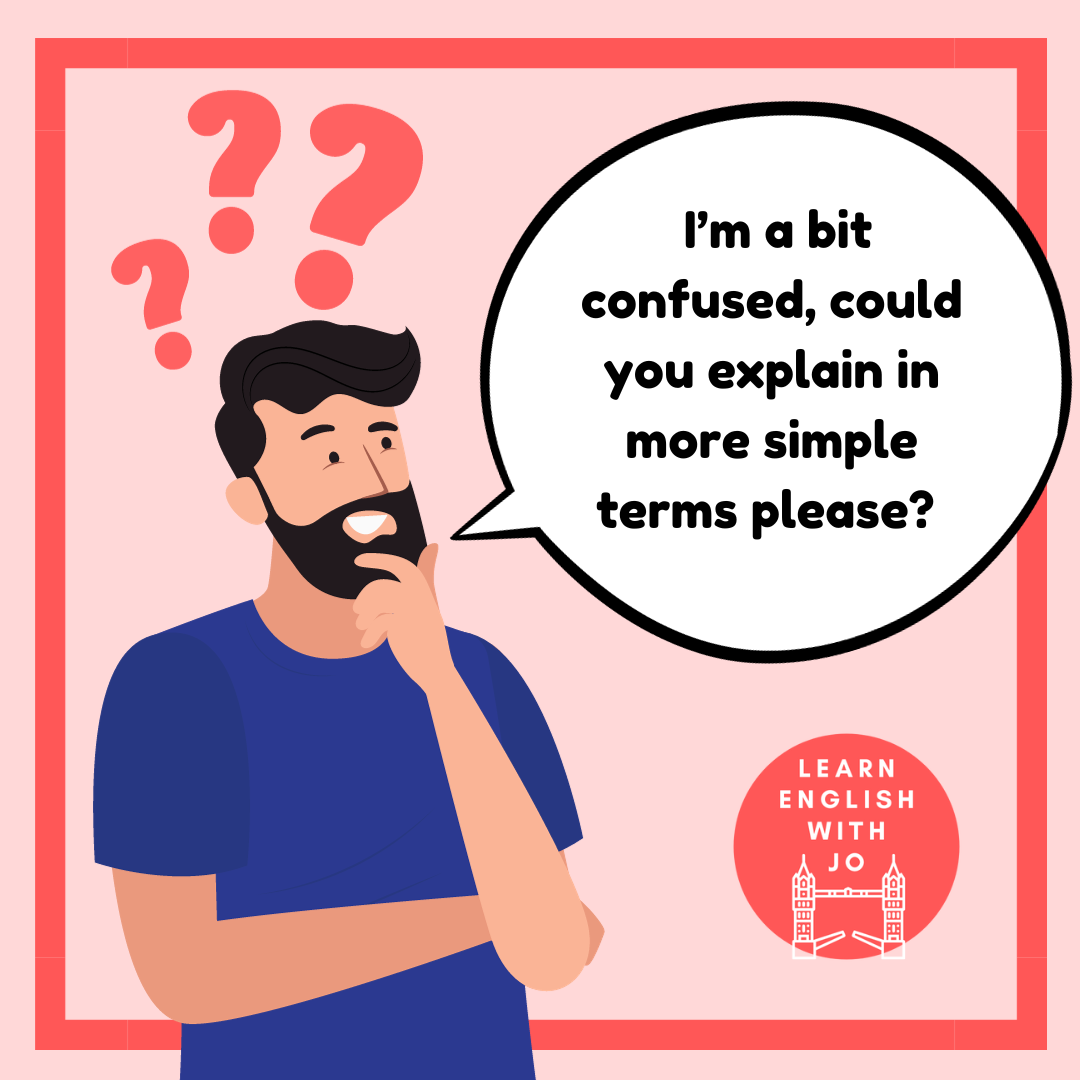How to say you don’t understand something in English.
We’ve all been in situations where we need to ask a person to repeat, clarify or to explain what they are saying. Maybe they are speaking very quickly or using words we don’t understand. Perhaps they’re speaking quietly or just haven’t explained themselves very clearly.
In the process of learning English, it's vital to remember that everyone encounters moments of confusion and uncertainty. Expressing your need for clarification is a sign of your dedication to learning and improving your language skills.
“Your effort to communicate will be appreciated and the vast majority of people will respond positively when you express your need for clarification. ”
There's absolutely no need to feel embarrassed or hesitant when you don't fully grasp what someone is saying. In fact, it's positively encouraged to express your lack of understanding. Your effort to communicate will be appreciated and the vast majority of people will respond positively when you express your need for clarification. So don’t be afraid to admit that you need further explanation.
I’ve come up with eight polite and effective ways to convey that you don't understand something in English.
1. I'm not quite following you, could you say that again please?
This phrase is both polite and straightforward. It conveys your desire to understand better without placing blame on the speaker.
2. I'm not sure that I get what you're saying.
By using "I'm not sure," you express your uncertainty without sounding dismissive. It opens the door for further explanation.
3. I'm a bit lost here, could you repeat that please?
Admitting that you're "a bit lost" is an honest way to let the speaker know you're struggling to keep up, and requesting a repetition is perfectly acceptable.
4. I can't get the drift of what you're saying.
This expression suggests that you're having difficulty grasping the main idea. It's a polite way of saying you need clarification.
5. I'm a bit confused, could you explain in simpler terms, please?
Confusion is a natural part of language learning, and seeking simpler explanations is a proactive way to improve your understanding.
6. Could you repeat that, please? I'm having trouble understanding you.
When you mention that you're having trouble understanding, you acknowledge your effort to comprehend and signal that additional assistance is needed.
7. I'm struggling to understand what you mean there. Could you explain again, please?
Expressing that you're struggling shows your determination to learn. It also prompts the speaker to rephrase their statement.
8. I'm sorry, I didn't understand a word of that. Could you slow down a bit?
Apologizing for not understanding is polite, and asking the speaker to slow down can be particularly helpful, especially when dealing with fast-paced conversations.
Here are a few additional tips to boost your confidence in these situations:
1. Maintain eye contact: This shows your interest and engagement in the conversation, even if you don't fully understand.
2. Use non-verbal cues: Nodding and smiling can convey your willingness to learn, even when you're struggling to comprehend.
3. Practice active listening: Pay attention to context, body language, and tone, as these can provide valuable clues for understanding.
4. Don't be afraid to ask questions: If you're unsure about specific words or phrases, inquire about their meaning.
So, remember, don't be afraid to say, ‘I don't understand’ – it's a valuable step on your journey to becoming a confident English speaker.

